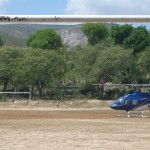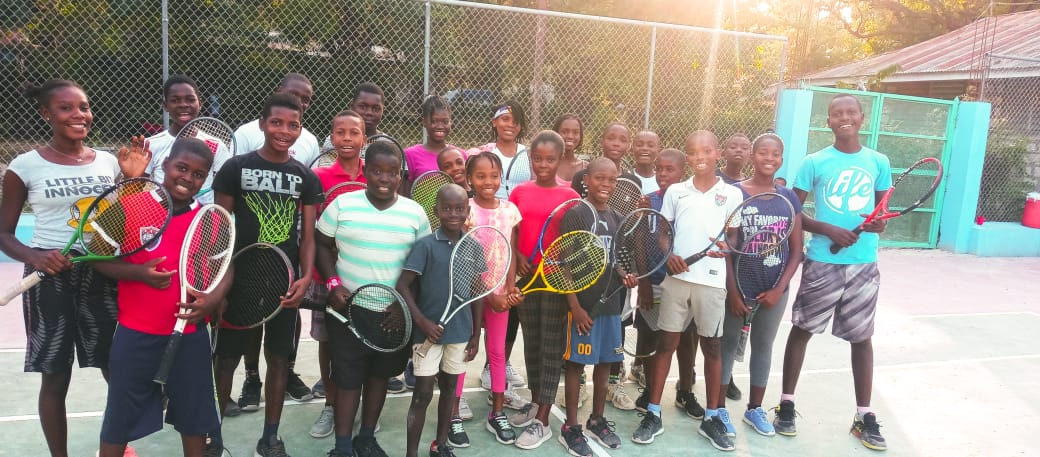
Deschapelles, Haiti (population roughly estimated to be 14,000 people) is located north of Port au Prince in the middle of Haiti’s northern peninsula, alongside the Artibonite River. It is nestled in the valley, between two mountain ranges, about five miles west of the nearest city, Verettes. Deschapelles and the Artibonite Valley is largely rural and has scarce publicly supplied electricity.

Originally, it was the site of a colonial sugar mill owned by the French de Chapelle family. This plantation was abandoned as a result of the Haitian revolution for independence. In the early 1900’s Standard Fruit established a banana plantation. They built some wonderful stone homes with beautiful mahogany paneled interiors appropriate for the tropical climate. Standard Fruit abandoned the plantation in the mid-20th century when a banana blight ruined the crop.

Deschapelles was a quiet little town until Hospital Albert Schweitzer was built and opened its doors in 1956. Since then the population has increased, both for job opportunities and also because of the available health care. The volunteer community group in the town: ODES (Organization pour Development Economique and Social) works for the good of the community and holds weekly meetings, open to all interested residents.

Some of the people living in Deschapelles are employed by Hospital Albert Schweitzer. Many others are subsistence farmers.
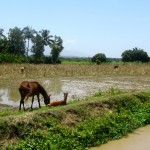
The Artibonite Valley in the Deschapelles area is a productive rice growing area. In addition, there are many small businesses such as carpenters, tailors, craftsmen, and a lively market area where the residents can purchase food and other supplies.

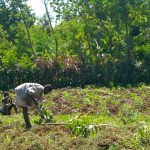
The hospital is about a mile off the paved state Route National which runs from Pont Sondè to Mirebelais. Along this road there are many homes, some of which double as small shops. Back from the main road, many houses can be found with more property where families grow corn, millet, other grains, fruits and vegetables. In general the houses are quite small with only a couple of rooms.

Because the weather is tropical, much of the life goes on outdoors. Houses range from very basic ones with thatched roofs to ones of cement block and cement or metal roofs. Few houses have electricity or running water. People often use firewood or charcoal for fuel, often contributing to the deforestation of Haiti.

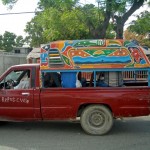
Very few people own cars. Most people walk, horseback ride, take “tap taps” (converted pick-up trucks), or a few ride on motobikes.


The Mellons arrived in Deschapelles in the 1950’s during the time of the Renaissance in Haitian Art. Because Mrs. Mellon encouraged many rural artists, and because the artists had a good market with all the foreign medical staff, art proliferated. Today there are still many artists but fewer foreigners. Deschapelles has a town “Fanfare” band, a group of mainly brass musicians who play for parades or more frequently for funerals. In the evening one can hear disco type music coming from cafés and sometimes drums, depending on the season.

All Haitians value education. The schools in Deschapelles are almost exclusively private schools. There are several primary schools (kindergarten-sixth) in Deschapelles. Every school requires that children purchase uniforms and they must have shoes as well as pay for books. Students from Deschapelles who attend secondary schools usually travel to Verettes, five miles away. Schools in Haiti are conducted in Kreyol and French (particularly at the secondary level) and follow the French educational system. Students are only able to attend a University after they have passed their national Rheto exams given after the 12th year of school and Philo exams given after their 13th year of school. The quality of the schools vary widely. It has been informally estimated that in the Deschapelles area over 60% of the children do not attend school at all or on a regular basis. Due to limited economic resources, many families may not be able to send all of their children to school.
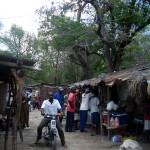
There are no libraries in the immediate area.
There are a number of well-attended churches of many denominations.

Soccer is the primary sport in Haiti, and one can almost always find a group of boys playing informal pick-up games in open fields. There is both a tennis court and a basketball court on HAS property which are used by the community. There is a full sized soccer field which doubles as a helicopter-landing pad in emergencies.
